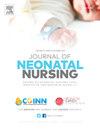Nursing Intervention Model of Continuing Premature Infant Discharge Planning (PITA) improves mothers' self-efficacy for overcoming stunting in Indonesia
Q2 Nursing
引用次数: 0
Abstract
Background
Indonesia suffers triple burden and is a country with a high prevalence of stunting. Infants born prematurely contribute to stunting while mothers experience self-efficacy problems.
Objectives
This study aims to analyze the effect of the PITA continuing nursing intervention model on the self-efficacy of preterm infant mothers.
Methods
This study is a true experimental study on 44 mother-preterm infant dyads were obtained by simple random sampling, block randomization, with an intervention in the form of structured and continuous health education from the hospital until 12 weeks after discharge or until the infant reaches three months of correction age. Data were analyzed using dependent t-test, independent t-test, and ANCOVA test.
Results
There was an effect of the PITA Nursing Intervention Model on maternal self-efficacy after controlling for parity, previous experience caring for premature infants, education, and maternal age (p-value = 0.011). The correlation test showed that there was a correlation between the PITA Nursing Intervention Model and maternal self-efficacy (p-value <0.001).
Conclusion
The PITA Nursing Intervention Model was effective in increasing maternal self-efficacy. Researchers suggest examining the relationship between maternal self-efficacy and the practice of caring for premature infants after hospitalization.
持续早产儿出院计划(PITA)的护理干预模式提高了印度尼西亚母亲克服发育迟缓的自我效能感
印度尼西亚承受着三重负担,是一个发育迟缓高发的国家。过早出生的婴儿会导致发育迟缓,而母亲则会遇到自我效能问题。目的探讨PITA持续护理干预模式对早产儿母亲自我效能感的影响。方法采用简单随机抽样、分组随机的方法,对44对早产儿母子进行了真实的实验研究,并对其进行了有组织的、持续的健康教育,干预时间为出院后12周或婴儿达到矫正年龄3个月。数据分析采用相关t检验、独立t检验和ANCOVA检验。结果在控制胎次、早产儿护理经验、教育程度和母亲年龄后,PITA护理干预模型对母亲自我效能感有显著影响(p值= 0.011)。相关检验显示,PITA护理干预模型与产妇自我效能感存在相关性(p值<;0.001)。结论PITA护理干预模式能有效提高产妇自我效能感。研究人员建议检查母亲自我效能感与住院后照顾早产儿的做法之间的关系。
本文章由计算机程序翻译,如有差异,请以英文原文为准。
求助全文
约1分钟内获得全文
求助全文
来源期刊

Journal of Neonatal Nursing
Nursing-Pediatrics
CiteScore
2.00
自引率
0.00%
发文量
143
期刊介绍:
Aims & Scope: This is the practical, bimonthly, research-based journal for all professionals concerned with the care of neonates and their families, both in hospital and the community. It aims to support the development of the essential practice, management, education and health promotion skills required by these professionals. The JNN will provide a forum for the exchange of ideas and information between the range of professionals working in this field; promote cooperation between these professionals; facilitate partnership care with families; provide information and informed opinion; promote innovation and change in the care of neonates and their families; and provide an education resource for this important rapidly developing field.
 求助内容:
求助内容: 应助结果提醒方式:
应助结果提醒方式:


